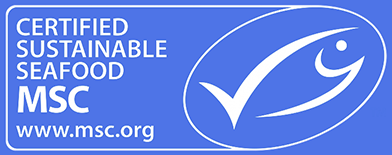Locations, Pickup, Delivery, & Shipping
Where can I buy Kenai-Red Fish Company seafood at a grocery store?
Kenai-Red is sold at stores in Oregon and California. View more about our locations.
Where can I buy Kenai-Red Fish Company seafood at a farmers market?
Kenai-Red is sold at farmers markets in Portland, OR, Vancouver, WA, and Hood River, OR. Meet us at a farmer’s market.
Can I get Kenai-Red Fish Company seafood with my Community Support Agriculture (CSA) box?
Kenai-Red partners with several local, Portland, OR CSAs to coordinate pickups. Find a CSA partner near you.
Where do we pick up our order?
NE Portland
1723 Northeast Thompson Street
Portland, 97212
SW Portland
3320 Southwest 44th Avenue
Portland, 97221
When can I pick up my order?
Upon checkout, you may choose your pickup location and time. There are two pickup days each month where you can come by and grab your salmon anytime between 4pm - 7pm.
Do you ship your seafood?
Yes, we offer shipping nationwide in the United States for an additional fee. Simply choose shipping at checkout and your shipping cost will populate according to order size and location.
How is the seafood shipped?
We ship all orders at the end of the month you place your order via next-day delivery. Our insulated boxes, packed with dry ice, maintain the highest quality throughout transit and ensure your fish arrives frozen.
Do you deliver seafood in Portland, OR?
Yes, we offer delivery within 15 miles of our SE warehouse for an additional $15 fee. Upon checkout you may select local delivery as an option, choosing from two delivery days each month.
About Kenai-Red Fish Company Products
Are your fish wild-caught?
Yes, everything we catch or source is always 100% wild caught.
Does your fish come fresh or frozen?
While both frozen and fresh salmon have their merits, we prefer frozen seafood. Our salmon is vacuum-sealed and flash-frozen, which locks in its freshness immediately after harvesting. Fresh salmon, on the other hand, can be days or even weeks old before it reaches consumers. During that time, the fish slowly degrades, so your "fresh" seafood may not be as fresh as you think. In fact, your frozen salmon may actually be fresher.
How much seafood do I need to order?
Fish needed for each household varies. Each 8-10 ounce portion is about ½ - ¾ a pound. A portion is typically 2 adult serving sizes. We recommend adding up how many people are in your household and how often you plan to eat seafood each week to calculate how much seafood you might want in your share, club, or order. For a little assistance with this math problem, check out our fish calculator.
How is your seafood packaged?
Our flash-frozen, vacuum-sealed fish is packaged in 8-10 ounce portions or ½ - ¾ a pound. A portion is typically 2 adult serving sizes.
How much freezer space is required?
Each portion is generally 8-10 ounces or ½ to ¾ a pound. A portion is typically 2 adult serving sizes. A 10-pound share will give you 8-12 portions, and a 20-pound share will give you 18-22 portions. Both sizes will fit easily in a standard kitchen freezer with room for other food.
How long will it last in the freezer?
Seafood should be kept frozen until ready for preparation. Items can be stored frozen for up to 12 months from catch (July of that fishing year), but are best if consumed within 10 months.
What is the best process for thawing frozen seafood?
The safest way to thaw your fish is under refrigeration. We recommend removing the product from the original packaging, placing it in a plastic bag or on a plate, and allowing it to thaw in the refrigerator for 6-8 hours, or overnight. If you require faster thawing, we recommend placing the vacuum-sealed portions in a bowl of COLD water for 30-45 minutes. Once thaw, remove from the packaging, rinse gently with cool water and pat dry.
Is it safe to eat your frozen seafood raw?
Yes, everything we sell is sashimi grade. Sashimi grade refers to the freezing procedures that are used to initially freeze and store seafood. All of our seafood meets the following requirements that are set forth by the USDA which requires freezing and storing seafood at -4°F (-20°C) or below for 7 days (total time), or freezing at -31°F (-35°C) or below until solid and storing at -31°F (-35°C) or below for 15 hours, or freezing at -31°F (-35°C) or below until solid and storing at -4°F (-20°C) or below for 24 hours’ which is sufficient to kill parasites.
Once thawed, how soon before I need to cook the seafood?
We always recommend cooking right away once thawed. The longer the fish sits, the more the taste and texture can be jeopardized. Once thawed, we do recommend rinsing in fresh water, patting dry with a paper towel, and storing in an airtight container. We recommend cooking within 48 hours of thawing.
Do I need to remove pin bones?
Yes, you will need to remove the pin bones. Our fish is as natural as it can be, which means that we do everything by hand and in small batches to maintain the quality of the fish. Pin bones aren't removed through filleting. Typically, large processors remove them with a machine called a (you guessed it) pin bone machine. In order to remove pin bones mechanically, the salmon have to “rest” for a few days so their flesh can soften. “Resting,” however, is really an industry euphemism for degrading. The process sacrifices enough quality that we’re uncomfortable doing it. You can easily pinbone yourself using this tutorial.
About Kenai-Red Fish Company
What is a Community Supported Fishery (CSF)?
Community supported fisheries (CSFs) are a way for consumers to buy high-quality, sustainably harvested seafood directly from fishermen. CSF members pay in advance for a share of the catch, which is delivered to them after the summer fishing season.
Why is a CSF good for Alaskan communities?
This business model supports small-boat family fishermen and ensures that they receive a fair price for their catch, generally higher than they otherwise receive from the large industrial seafood companies.
When was Kenai-Red Fish Company founded?
Kenai-Red Fish Company was founded in 2013.
Who are the founders of Kenai-Red Fish Company?
Clint Benson and Allison Jones are a father-daughter duo who started Kenai-Red Fish Company.
Where is Kenai-Red Fish Company headquartered?
While the company’s roots are in Portland, the team owns and operates a processing plant in Ninilchik, Alaska, on the majestic Cook Inlet. We are proud to be part of the local community.
Where is the Kenai-Red Fish Company seafood from?
All Kenai-Red seafood is from Ninilchik, Alaska, on the majestic Cook Inlet.
Fish & Seafood Industry
Why is it important to choose wild-caught seafood over farmed seafood?
Wild seafood is caught from the ocean, which is a natural resource that can replenish itself over time. Farmed seafood, on the other hand, is raised in pens or cages, which can pollute the environment and put wild fish populations at risk. Wild seafood is generally more nutritious than farmed seafood. This is because wild fish have a more diverse diet and are able to swim freely, which helps them develop stronger muscles and immune systems. Farmed fish, on the other hand, are often fed a diet of antibiotics and other chemicals, which can reduce their nutritional value. Lastly, wild seafood is generally considered to be more flavorful and complex than farmed seafood.
What are the nutritional benefits of wild-caught salmon?
Wild salmon is a superfood that is packed with essential nutrients, including Omega-3 fatty acids, protein, iron, vitamin B12, selenium, phosphorus, and zinc. Eating wild salmon can help promote heart health, reduce inflammation, support brain health, and improve overall skin health.
What are pin bones and why don’t we remove them?
Our fish is as natural as it can be, which means that we do everything by hand and in small batches to maintain the quality of the fish. Pin bones aren't removed through filleting. Typically, large processors remove them with a machine called a (you guessed it) pin bone machine. In order to remove pin bones mechanically, the salmon have to “rest” for a few days so their flesh can soften. “Resting,” however, is really an industry term for degrading. The process sacrifices enough quality that we’re uncomfortable doing it. You can easily pinbone yourself using this tutorial.






